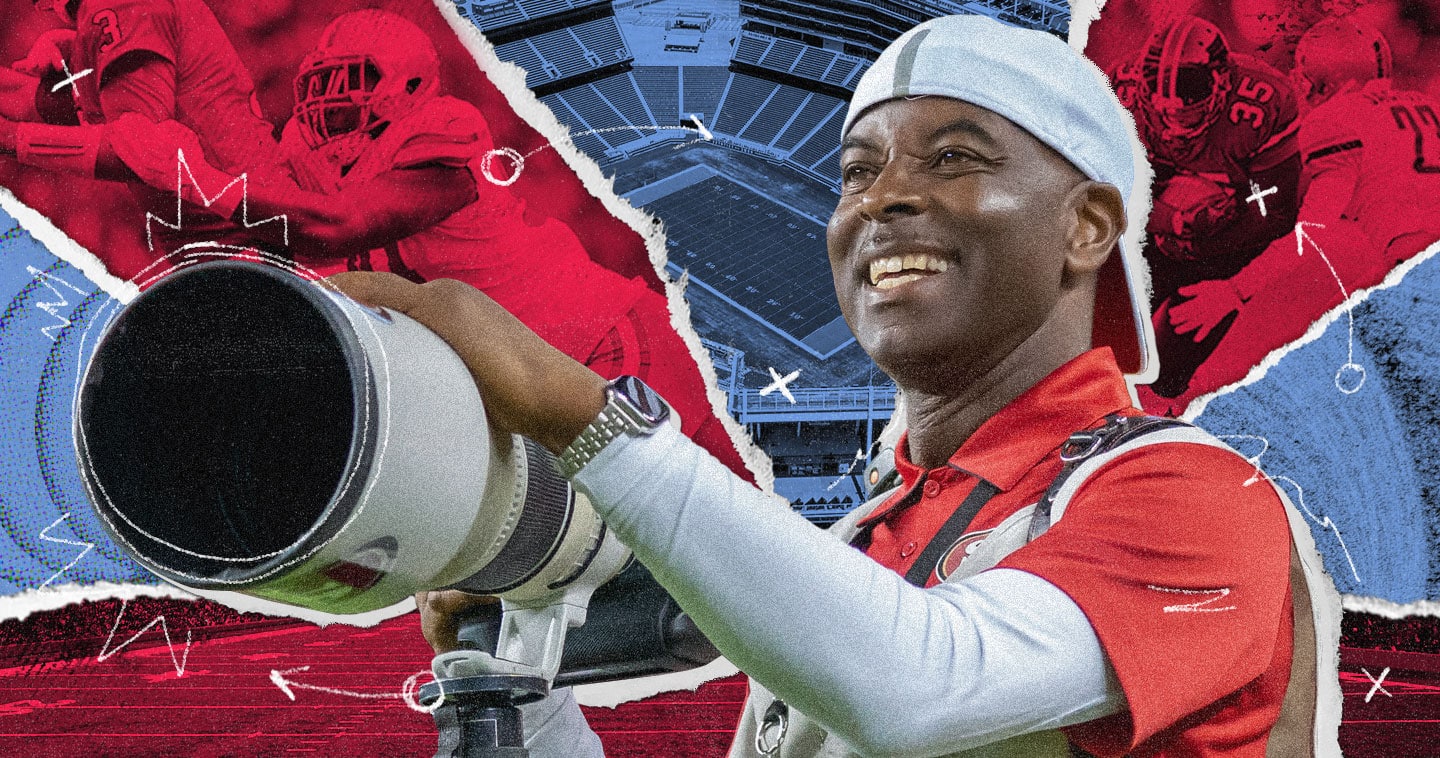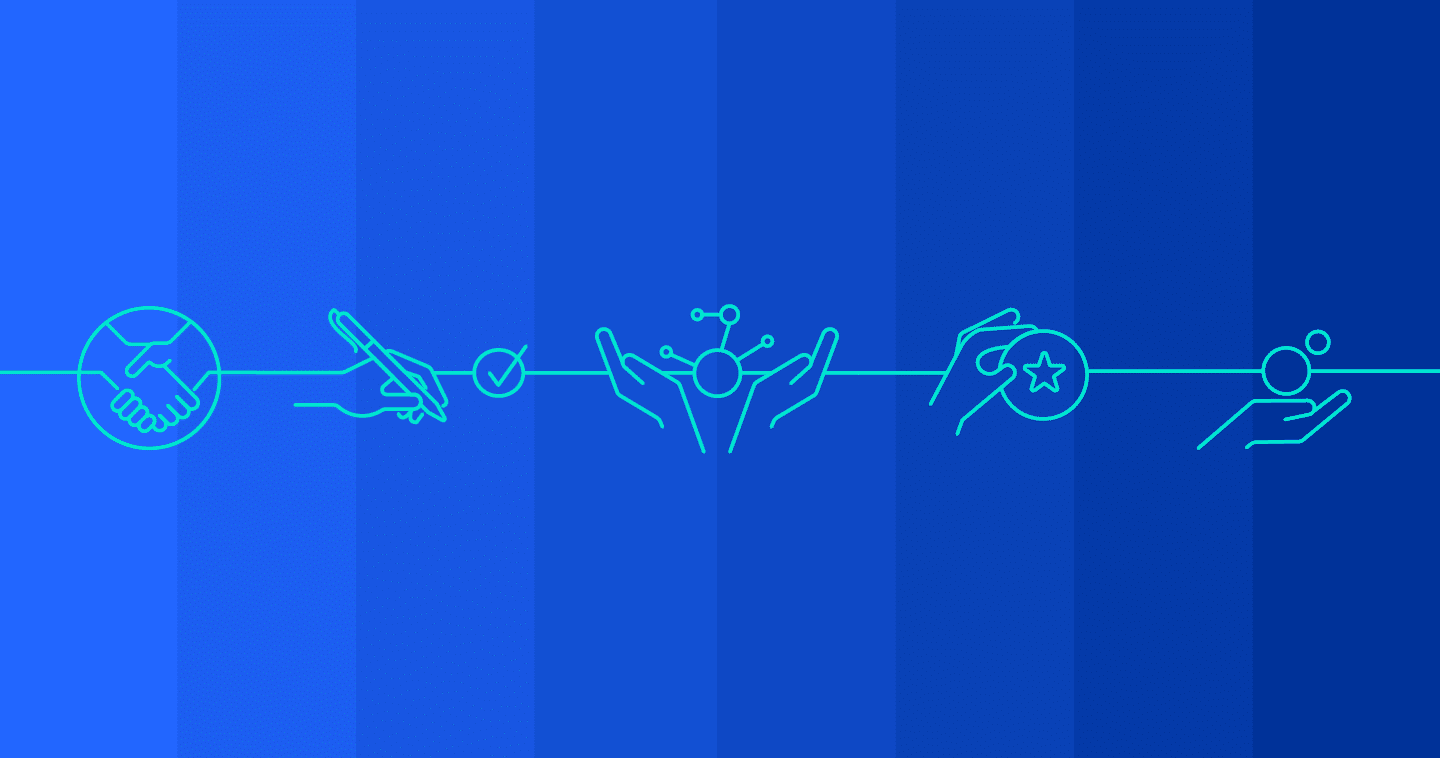Game Day with Sports Photographer Terrell Lloyd
Terrell Lloyd, director of photography for the San Francisco 49ers American football team, knows how to capture data—to the tune of 15,000-20,000 images per game day. He’s now in his 27th season shooting photos of the NFL team. And while photography was not his first career, it was always his passion.
When Lloyd had a paper route delivering newspapers in his youth, his love for football and the 49ers roused him to cut out photos and make his own 49ers photo books from the clippings.
At the same time, Lloyd was developing another talent. He excelled at bowling. Growing up in San Francisco, Lloyd was a determined teenager and aspired to be the first minority to win a national bowling title. No black bowler had ever won a PBA tournament, and only one other had been on television. While studying computer science at community college, he worked in a bowling center on weekends, advancing his bowling skill set and practicing his roll.
Through a series of serendipitous events, Lloyd found his way into the tech industry. He was hospitalized at the age of 19 and had to take medical leave from school. After he recovered, he pursued a professional bowling career two years later at 21 (years old). Then after two and a half years on the PBA Tour, he landed an entry-level job at Nortel Networks in their computer data center backing up tapes. “I was African American without a degree, and I had no experience; but since I was studying computer science when I was in school, they gave me an opportunity,” said Lloyd.
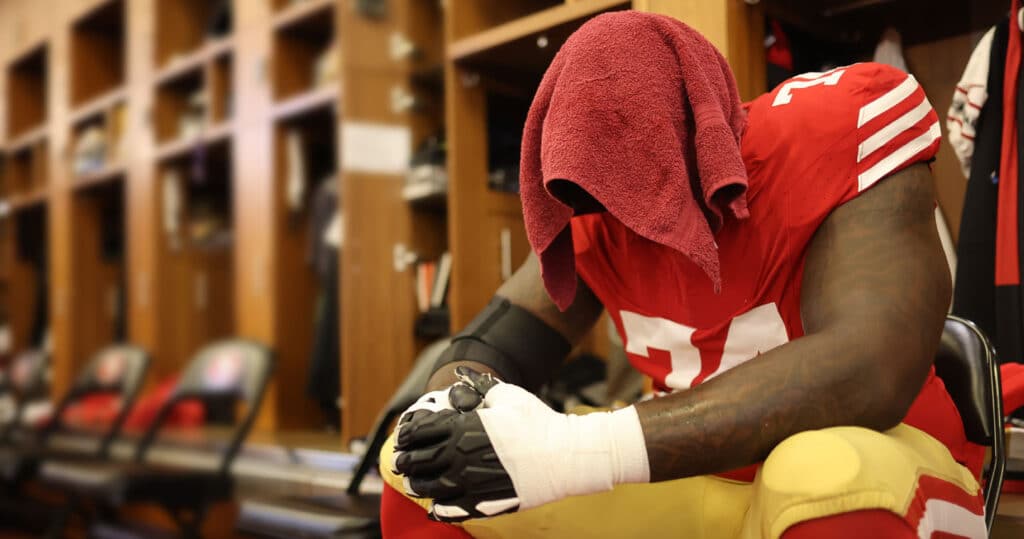
Persistence pays off
Regardless of what he did, his persistence and passion shine through for anything he does, even networking. He learned all about networking and project management at Nortel. Within a few years he was managing the company’s entire data center.
His love for the 49ers never stopped, nor his desire to work for them. Nortel’s headquarters were just around the corner from the stadium and he was a season ticket holder. Then, he gained field access when writing for the team’s monthly magazine, attending press conferences every Monday just to have a presence. This eventually parlayed into a job with the team’s Entertainment group, taking tailgate pictures, images of the halftime dog shows, and all the photos others didn’t want to take. When he was eventually hired as a photographer, he asked his manager why he’d hired him without ever seeing one of his photographs.
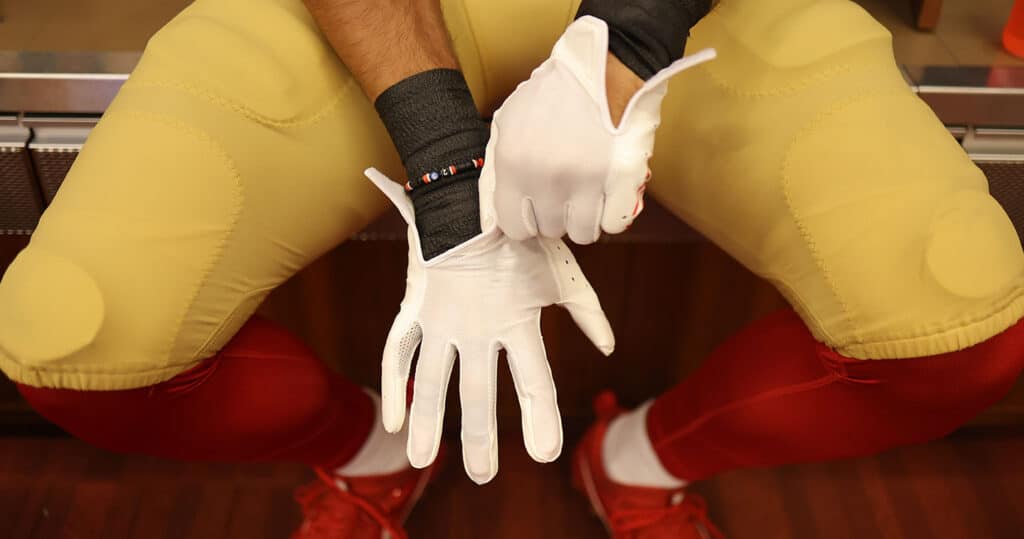
“You’re pleasant, you’ve always got a smile on your face, you say hello to people,” the manager said. “I figured you’d be good for the job.”
Any given Sunday
Now Lloyd spends every Sunday during the football season working from 7:30 a.m. to 8:00 p.m. capturing pre- and post-game footage and raw action shots, sorting, and cataloging them, pulling select images and delivering them to his client.
“I love the game; I love how different every play is and trying to anticipate what’s going to happen. I consider myself like an offensive coordinator or defense coordinator, always trying to figure out where the play’s going to go,” he said.
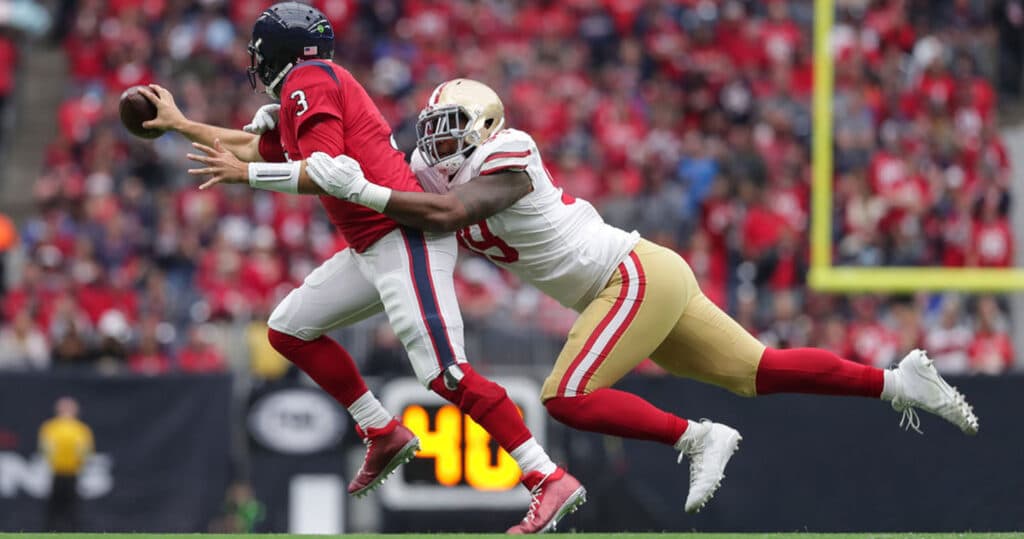
His workflow today includes the SanDisk 128GB and 256 GB flash storage on the field, and he has storage servers in his stadium office, and a G-RAID tower – enough storage to manage the 2-4 TB of data after each game.
He shoots 15,000 – 20,000 images per game with 5 cameras and an array of lenses. He has a staff of photographers positioned around the field, locker room, sidelines, and stadium. He then narrows those images down to 4,000 – 6,000 game action shots and might pull 8% – 10% for highlights.
“I may have 10-50 images of George Kittle’s touchdown that go immediately to the press box,” said Lloyd. After the game and in the days following, his coordinator tags the photos for the archive asset management database.
Home and away playbooks
A SanDisk Pro-Team member since its origins, Lloyd is always equipped with storage cards and flash drives. His background in IT proved to be a major asset in his workflow, specifically tapping into his networking background when Levi’s Stadium was built.
“I told the president I needed a wireless network in Levi’s, but not one shared with 60,000 fans,” said Lloyd. He convinced him to create twelve access points on the perimeter of the field for exclusive game coverage use. Originally, (back at Candlestick Park, the 49ers’ previous stadium) he had to FTP from a camera to an FTP server during a game. Candlestick was an older stadium, lacking modern infrastructure.
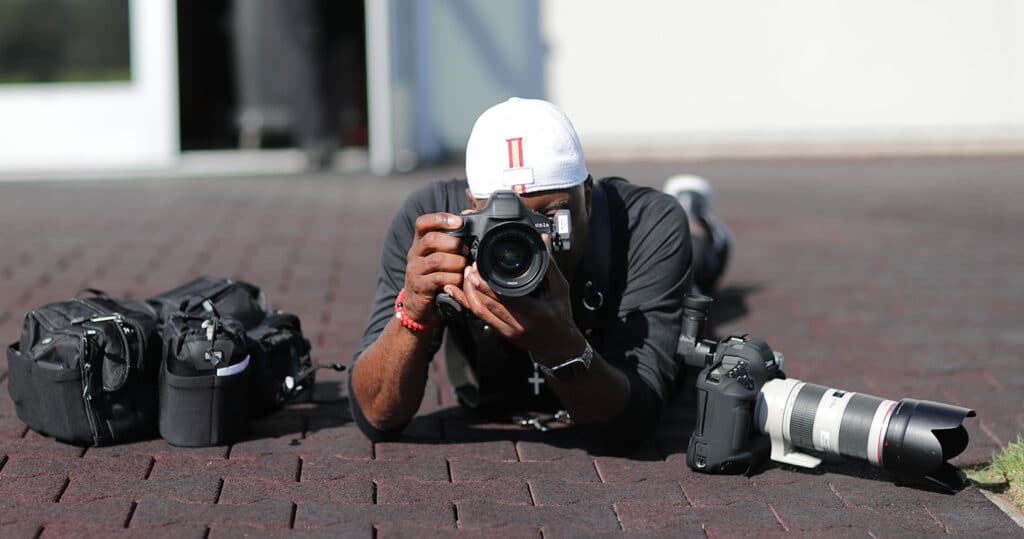
As a SanDisk Pro-Team Ambassador, he was privy to the company’s new products and roadmaps. At a Pro-Team summit, he acquired a MyPassport wireless solid-state drive (SSD) as a giveaway. A light bulb went off in Lloyd’s head and he knew this was exactly what he needed. Instead of physically running five SD cards to the press box, he could now send select photos wirelessly.
“I cut that time down by two-thirds by using the SanDisk wireless product instead of giving them five cards, and then it’s taking 20-25 minutes to do everything. Now I transferred, give them the wireless (My Passport) and it takes less than three minutes to drag and drop,” said Lloyd.
Faithful to the Bay, loyal to the brand
Lloyd has been an eyewitness to several generations of both 49ers and of SanDisk products. His affection for SanDisk is based on the products’ speed, quality, and reliability.
He started with SanDisk cards and drives using digital cameras around 1996 (the Steve Young/Jerry Rice era). He’s always looking to the next thing and how technology can make the job easier for creators like himself.
“You have to evolve as technology evolves,” said Lloyd, who recalls a coach who said, ‘if you’re not getting better, you’re getting worse.’
Today, Lloyd only uses SanDisk storage products.
“Once you start working with a brand and (you know) where they’re going with technology and it’s working, you tend to trust what they’re doing,” he said.
Storage must be able to read and write fast, as quickly as the camera is shooting. You also don’t want a buffer to fill up, and miss shots on the field, explains Lloyd.
“What are images worth?” he asks.“ (With SanDisk) there was never a time I couldn’t recover pictures. If you have your data – that’s gold!”
“I love what I do,” he said. “This is not a job to me.”
A winning combination
Lloyd’s passion is contagious. Now in the off-season, following the 49ers’ seventh SuperBowl appearance, Lloyd is managing a summit for all of the NFL photographers to be held in Las Vegas. The second of its kind, his goal is to mentor young photographers, build comradery, and share best practices such as shooting Associated Press (AP)-style headshots that are consistent across all the teams’ photos. There are also sessions on lighting, shooting, archiving, and tagging images.
“It’s the people you meet, the things you do, and in the way you network with people, how you treat people and how you talk to people,” says Lloyd on chasing opportunities like bowling championships, working in the data center, or leading the photography department for his favorite NFL team.
A dream job come true.
For more on Lloyd’s photography and storage workflow, check out his appearance on “24 Hours Before Kickoff” on YouTube.
Header Artwork by Rachel Garcera

